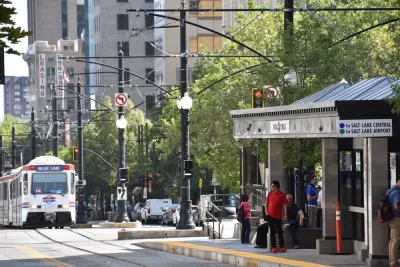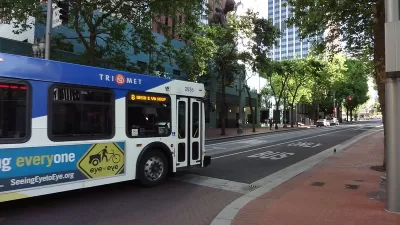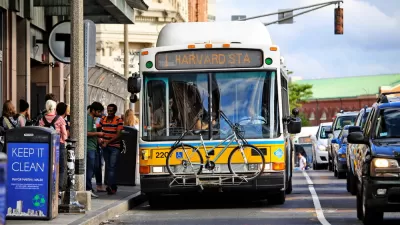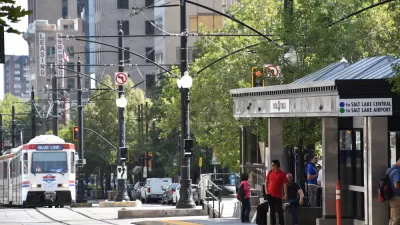The Utah Transit Authority is proposing a new approach to transit service design for the counties on the Wasatch Front, focusing changes on a "core route network" of frequent service.

The Utah Transit Authority (UTA) has revealed a new vision for bus and rail service for the next five years, focusing on a "core route network" of frequent service for the communities of the Wasatch Front.
Lee Davidson reports details and political background of the major service changes proposed by the UTA earlier this month, presented by UTA planners in context of the pandemic and a budgetary commitment to maintain service at 91 percent of pre-pandemic service levels.
UTA Planning Director Laura Hanson is quoted in the article discussing the need to stabilize the region's transit system. According to Hanson, the system's planners are being very cautious: "The worst thing possible would be to put service on the ground and then realize that we didn’t have the ability to keep it going."
The new five-year service design follows two years of public participation in the "Service Choices" outreach process.
According to Davidson, the key change is the plan's organizing principle around the network of high-frequency, core routes. Hanson is quoted in the article to explain:
“These are a series of routes that are frequent enough that you really don’t need a schedule,” Hanson said. “You know that if you’re on a core route, the bus or train will come within 15 minutes. It will run early in the morning, late at night, and seven days a week.”
A county-by-county list of proposed changes is included in the source article.
For more background on UTA's service design efforts, see an article published earlier in the month by Jasen Lee.
FULL STORY: UTA unveils 5-year service plan — envisioning a ‘core route network’ with service every 15 minutes

Trump Administration Could Effectively End Housing Voucher Program
Federal officials are eyeing major cuts to the Section 8 program that helps millions of low-income households pay rent.

Planetizen Federal Action Tracker
A weekly monitor of how Trump’s orders and actions are impacting planners and planning in America.

Ken Jennings Launches Transit Web Series
The Jeopardy champ wants you to ride public transit.

NYC Open Streets Organizers Call for City Support
The number of open streets projects has dropped year after year as volunteer groups struggle to fund and staff them.

Crime Continues to Drop on Philly, San Francisco Transit Systems
SEPTA and BART both saw significant declines in violent crime in the first quarter of 2025.

How South LA Green Spaces Power Community Health and Hope
Green spaces like South L.A. Wetlands Park are helping South Los Angeles residents promote healthy lifestyles, build community, and advocate for improvements that reflect local needs in historically underserved neighborhoods.
Urban Design for Planners 1: Software Tools
This six-course series explores essential urban design concepts using open source software and equips planners with the tools they need to participate fully in the urban design process.
Planning for Universal Design
Learn the tools for implementing Universal Design in planning regulations.
Heyer Gruel & Associates PA
Ada County Highway District
Institute for Housing and Urban Development Studies (IHS)
City of Grandview
Harvard GSD Executive Education
Toledo-Lucas County Plan Commissions
Salt Lake City
NYU Wagner Graduate School of Public Service





























